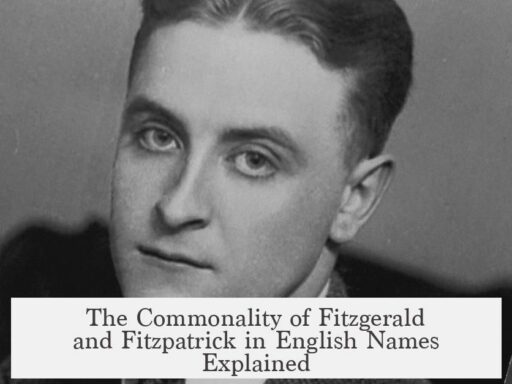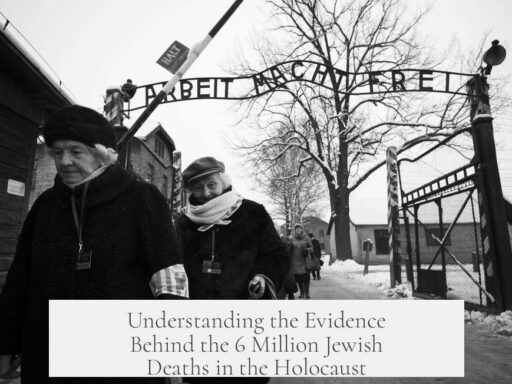There was no single “best” fighter of World War II. The effectiveness of any fighter depended heavily on the context in which it was used, including the specific theater, period of the war, mission role, and pilot skill. Aircraft were designed with trade-offs tailored to meet particular needs, making it impossible to crown one clear winner across all criteria.
During World War II, aircraft development advanced rapidly. Planes that dominated in 1940 became obsolete by 1945. For example, the Messerschmitt Bf 109 was an excellent fighter early in the war but lagged behind newer Allied models like the P-51 Mustang after 1943. This constant evolution means comparing fighters from different years without specifying the timeframe distorts the analysis.
Fighter designs involved significant compromises. Some fighters excelled in speed but sacrificed maneuverability or firepower. The Japanese Mitsubishi A6M Zero, famed for its agility and turning ability, lacked armor compared to others. German Bf 109s balanced speed and firepower but did not turn as well as the British Spitfire. The Focke-Wulf Fw 190 combined speed and pilot protection, making it a formidable adversary during its prime.
Beyond aircraft characteristics, pilot skill and training played a crucial role. By 1944, Allied pilots generally had more flight hours and better training than their Axis counterparts. This experience gap often determined battle outcomes, as superior tactics and situational awareness trumped raw aircraft performance. The Grumman F6F Hellcat achieved a remarkable 19:1 kill ratio in the Pacific, in part due to skilled American pilots and strong command and control systems.
Strategic factors also shaped fighter effectiveness. Allied access to abundant fuel and well-organized pilot rotation helped maintain a steady flow of experienced aircrew. Conversely, Japan struggled to replace lost pilots and failed to scale production of newer aircraft efficiently. Allied radar and command systems further enhanced situational awareness and battlefield coordination, conferring advantages beyond the machines themselves.
| Fighter | Notable Strengths | Context and Role |
|---|---|---|
| Focke-Wulf Fw 190 | Top speed for early period, cockpit visibility, heavy firepower, pilot protection, comfortable controls | Dominant German fighter 1941–43; later D variant excelled as a piston-engine aircraft in 1944 |
| Supermarine Spitfire | Fast, agile, excellent turn-fighter, long production run | Key British fighter before, during, and after war; excelled at dogfighting and interception |
| North American P-51 Mustang | Long range, good firepower, ease of flight, excellent visibility and maneuverability | Critical as a bomber escort deep into German territory; essential in air superiority in Europe |
| Grumman F6F Hellcat | Rugged, easy to fly, high kill ratio, powerful double Wasp engine | Top US Navy fighter in Pacific; succeeded in turning tide against Japanese aircraft |
| Vought F4U Corsair | High speed, maneuverability, firepower; robust at low and high speeds | Excellent US Navy and Marine fighter; earned nicknames “Whistling Death” and “Hog” |
| Lockheed P-38 Lightning | Twin-engine stability, powerful armament, superior climb and acceleration | Versatile American fighter and reconnaissance plane, especially effective in Pacific theater |
| Messerschmitt Me 262 | First operational jet fighter with unmatched speed | Introduced late; would have been dominant if deployed earlier but too late to influence war decisively |
| Mitsubishi A6M Zero | Outstanding agility and turning performance | Best carrier-based fighter early in the war; gradually lost edge as Allied designs improved |
| Messerschmitt Bf 109 | Widely produced, adaptable, high kill count | Mainstay Luftwaffe fighter; versatile but eventually outclassed in later war by faster, better-armed aircraft |
The diversity of roles fighters had to perform complicates identifying a single best model. Some aircraft were optimized for dogfighting; others for high-speed interception or bomber escort. The Fw 190 was valued for speed and firepower, the Spitfire for agility, and the P-51 for range and versatility.
In summary, the “best” WWII fighter depends on specific criteria like time period, theater, mission, and pilot proficiency. Aircraft longevity, versatility, and impact on the outcome also matter. For instance, the P-51 Mustang’s role in securing air supremacy over Europe was vital, while the F6F Hellcat dominated in the Pacific.
- No definitive best fighter due to varied roles and rapid wartime development.
- Designs reflect compromises tailored to mission and environment.
- Pilot skill, training, and support systems often mattered more than aircraft alone.
- Diverse top fighters excelled in different areas: speed, maneuverability, range, firepower.
- Strategic factors like production capacity and logistics influenced overall effectiveness.
Was There a “Best” Fighter of WW2?

So, was there a single “best” fighter plane in World War II? The short answer is no. But before you toss your pilot’s helmet into the air in disappointment, let’s explore why determining the top dog among WWII fighters is more complicated than a dogfight over Berlin.
Context Makes the Fighter

First off, the idea of a “best” fighter plane is like asking for the best ice cream flavor—totally depends on your taste and situation. World War II covered a sprawling global theater with rapidly changing technologies, landscapes ranging from the Pacific islands to the European skies, and diverse combat roles requiring specialized planes.
One key insight is this: there was no single best fighter. The best fighter was the right aircraft at the right time for the right mission. That’s because fighters were designed and optimized based on the needs and conditions of the countries making them.
Think about it this way: Would you send a Spitfire designed for nimble turn fighting against a powerful Bf 109 in speed? Probably not, unless you’re ready for a tough fight. Each aircraft had strengths tailored to specific tasks. For example, Japan’s Mitsubishi A6M Zero dominated early war in the Pacific with superb maneuverability, but its fragility caught up with it later as Allied designs improved.
WWII Technology Was a Sprint, Not a Marathon

Another big reason why a single best fighter can’t be crowned is how quickly technology evolved during those six intense years. New models rolled out frequently while older ones got turbocharged upgrades.
Lets be honest, a plane that rocked the skies in 1940 could be outdated garbage compared to its shining successor in 1945. The Bf 109 proved this well: it was a feared opponent early on, but by the war’s end, it struggled to keep pace with newer Allied designs. The same goes for many planes—continuous improvement meant yesterday’s king could be today’s underdog.
Design Trade-offs: The Sandwich Everyone Hates and Loves

In aviation, every advantage comes with a trade-off—a classic “you can’t have it all” situation. Trying to create a fighter good at everything often ended up with a plane that was just okay at everything. Sound familiar? That’s what happened decades later with the F-35, an aircraft aim to be both a jack of all trades and master of some, but ended up…well, a bit mediocre in some roles.
Take the Japanese Zero and German Bf 109. The Zero excelled in tight turning dogfights, while the Bf 109 shone with “boom and zoom” tactics—hit hard quickly and then climb away. Then you have the British Spitfire and Hawker Hurricane, which packed serious firepower and were excellent dogfighters. The plain truth: fighters prioritized what their designers thought mattered most for their nation and theater.
Pilot Skill: The Ultimate Multiplier

Even the best plane doesn’t fly itself to glory. The skill and training of the pilot steering the aircraft often made a huge difference. It’s not just about horsepower and speed; factors like altitude advantage, who spots the first enemy, and how well you manage your aircraft can tip the scales.
For instance, by 1944, average Allied pilots clocked twice the flying hours of many Axis pilots. This amount of training gave Allied flyers an edge that even the most advanced technical specs couldn’t match. The Grumman F6F Hellcat may have been a sweet technical fighter, but it’s the pilot skill and supporting systems that earned it its nickname as the “Ace Maker.”
Beyond the Airframe: Logistics and Strategy Win Wars
Don’t forget the broader picture—wars aren’t just airborne ballet performances. Logistics, command, control systems, and strategic advantages play a huge role. The Allies benefited hugely from near-limitless fuel supply in North America and a system that rotated veteran pilots back to training new recruits.
Contrast that with Japan, where pilot training was rushed due to losses, and newer planes couldn’t be produced fast enough. Allied command and control, aided by radar advances, provided pilots with better battlefield awareness—kind of like giving chess players a 3D board while their opponents play checkers.
The Contenders: A Fighter Hall of Fame
Now that we’ve established there’s no definitive best, let’s meet some of the iconic fighters and their standout qualities.
- Focke-Wulf Fw 190: When the Fw 190 entered the scene in 1941, it was the fastest fighter on the block, unsettling Allied pilots. With great pilot visibility, heavy firepower, and comfortable cockpit tech upgrades, it was a formidable opponent. The 1944 Fw-190D variant remains one of the most impressive piston-engine fighters ever.
- Supermarine Spitfire: Fast, agile, and a lifelong veteran, the Spitfire stayed in production before, during, and after the war. Its turn-fighting skills made it legendary, especially during the Battle of Britain, symbolizing British resilience.
- North American P-51 Mustang: The quintessential long-range escort plane, the P-51 enabled Allied bombers to strike deep into Germany. Its firepower, range, and ease of flight made it a game changer, denying the Luftwaffe safe airspace.
- Grumman F6F Hellcat: With a jaw-dropping kill ratio of 19 to 1 in the Pacific, the Hellcat earned the “Ace Maker” title. Designed partly after the Fw 190, it was tough, fast, and easy to fly, powered by two powerful radial engines.
- Vought F4U Corsair: Nicknamed “the hog” by Americans and “whistling death” by enemies, the Corsair blended speed, firepower, and maneuverability. It racked up an impressive 10,000 kills with relatively low pilot deaths, mostly from ground fire.
- Lockheed P-38 Lightning: This twin-boom, twin-engine design sported counter-rotating propellers, giving it stable shooting capabilities. It climbed and accelerated better than many American fighters, making it effective in multiple roles.
- Messerschmitt Me 262: The world’s first operational jet fighter changed air combat dynamics. Introduced late, it outpaced any piston-engine fighter, making it a terrifying opponent. Had it arrived earlier, the war might’ve taken a different turn.
- Mitsubishi A6M Zero: Early in the war, the Zero was king of carrier-based fighters, unmatched in dogfights with superb turning abilities. Its limitations emerged later, but it left an undeniable legacy.
- Bf 109: The Bf 109 holds the record for the highest kill count, flown by Germany’s top aces. It balanced performance with mass production, adapting through many variants throughout the war. While not the outright fastest or toughest, it was a tough competitor.
So, What Can We Take Away?
Asking if there was a single “best” fighter of WWII is like asking if there was the best superhero. It depends on their powers, the villains, and the mission. Differences in design philosophy, rapid technological change, pilot skill, strategic support, and theater conditions all blend together to make a definitive answer impossible.
Instead of searching for a singular champion, it’s more rewarding to appreciate the varied strengths and shortcomings, and how each fighter served its purpose at the critical moments.
Which fighter excites you the most? The agile Spitfire darting through the skies over Britain? The gruff Corsair with its ominous whistle? Or the futuristic Me 262 jet that rocked the war’s last acts?
Let’s celebrate each for what it was: a piece of history that shaped the hardest skies humanity has battled in—and in many ways, the *right* fighter at the *right* time was simply the best answer anyone could hope for.



